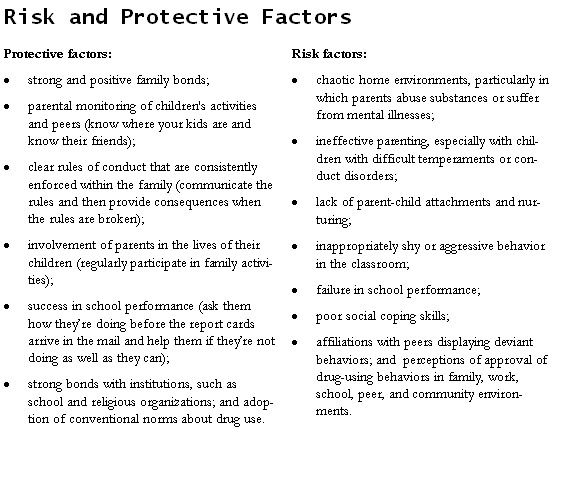|
|
|
|
|
|
 esearch over the past two decades has tried to determine how drug abuse begins and how it progresses. Many factors can add to a person's risk for drug abuse. Risk factors can increase a person's chances for drug abuse, while protective factors can reduce the risk. Please note, however, that most individuals at risk for drug abuse do not start using drugs or become addicted. Also, a risk factor for one person may not be for another. esearch over the past two decades has tried to determine how drug abuse begins and how it progresses. Many factors can add to a person's risk for drug abuse. Risk factors can increase a person's chances for drug abuse, while protective factors can reduce the risk. Please note, however, that most individuals at risk for drug abuse do not start using drugs or become addicted. Also, a risk factor for one person may not be for another.
Risk and protective factors can affect children at different stages of their lives. At each stage, risks occur that can be changed through prevention intervention. Early childhood risks, such as aggressive behavior, can be changed or prevented with family, school, and community interventions
|
|
|
|
|
|
|
|
|
|
|
that focus on helping children develop appropriate, positive behaviors. If not addressed, negative behaviors can lead to more risks, such as academic failure and social difficulties, which put children at further risk for later drug abuse.
In more than 20 years of drug abuse research, the National Institute on Drug Abuse (NIDA) has identified important principles for prevention programs in the family, school, and community. Prevention programs often are designed to enhance "protective factors" and to reduce "risk factors." Research has shown that many of the same factors apply to other behaviors such as youth violence, delinquency, school dropout, risky sexual behaviors, and teen pregnancy.
|
|
|
|
|
|
|





